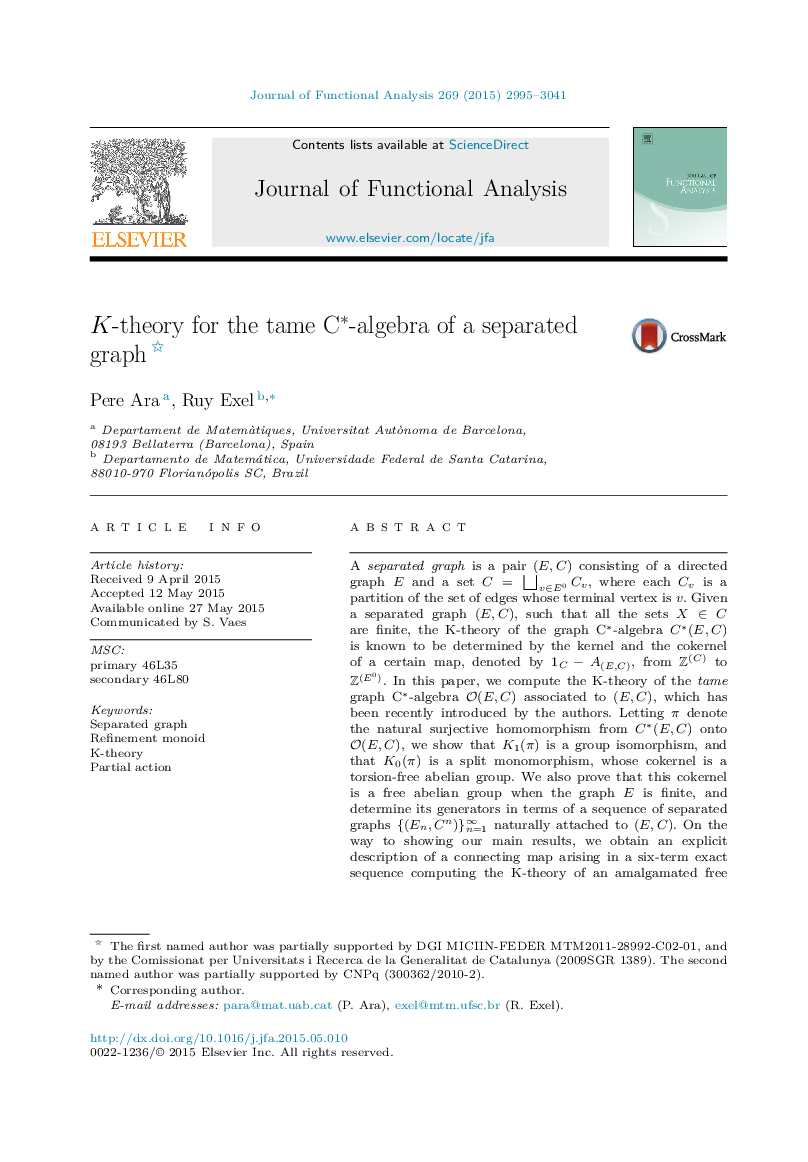| Article ID | Journal | Published Year | Pages | File Type |
|---|---|---|---|---|
| 4589953 | Journal of Functional Analysis | 2015 | 47 Pages |
A separated graph is a pair (E,C)(E,C) consisting of a directed graph E and a set C=⨆v∈E0CvC=⨆v∈E0Cv, where each CvCv is a partition of the set of edges whose terminal vertex is v . Given a separated graph (E,C)(E,C), such that all the sets X∈CX∈C are finite, the K-theory of the graph C⁎-algebra C⁎(E,C)C⁎(E,C) is known to be determined by the kernel and the cokernel of a certain map, denoted by 1C−A(E,C)1C−A(E,C), from Z(C)Z(C) to Z(E0)Z(E0). In this paper, we compute the K-theory of the tame graph C⁎-algebra O(E,C)O(E,C) associated to (E,C)(E,C), which has been recently introduced by the authors. Letting π denote the natural surjective homomorphism from C⁎(E,C)C⁎(E,C) onto O(E,C)O(E,C), we show that K1(π)K1(π) is a group isomorphism, and that K0(π)K0(π) is a split monomorphism, whose cokernel is a torsion-free abelian group. We also prove that this cokernel is a free abelian group when the graph E is finite, and determine its generators in terms of a sequence of separated graphs {(En,Cn)}n=1∞ naturally attached to (E,C)(E,C). On the way to showing our main results, we obtain an explicit description of a connecting map arising in a six-term exact sequence computing the K-theory of an amalgamated free product, and we also exhibit an explicit isomorphism between ker(1C−A(E,C))ker(1C−A(E,C)) and K1(C⁎(E,C))K1(C⁎(E,C)).
